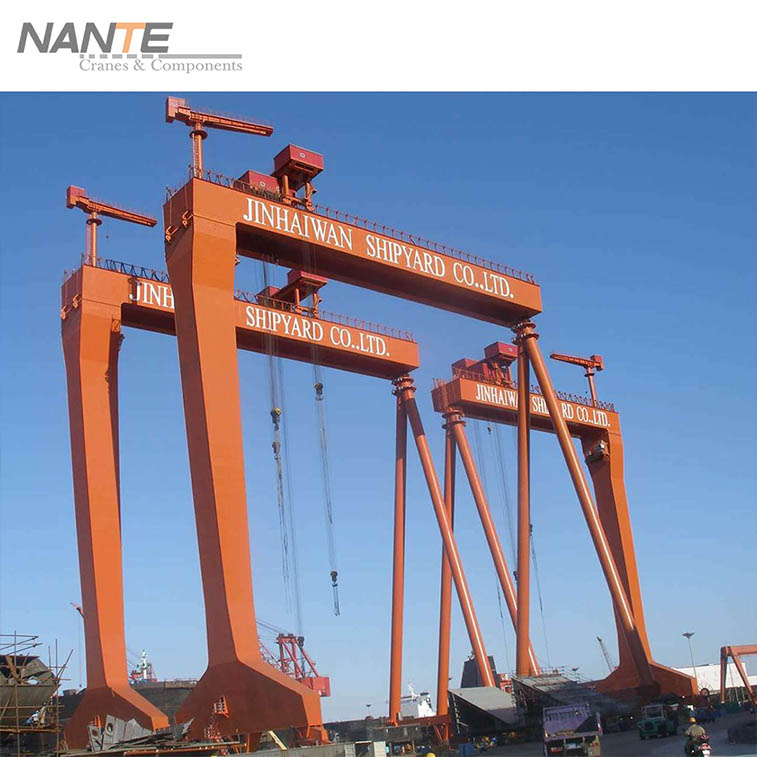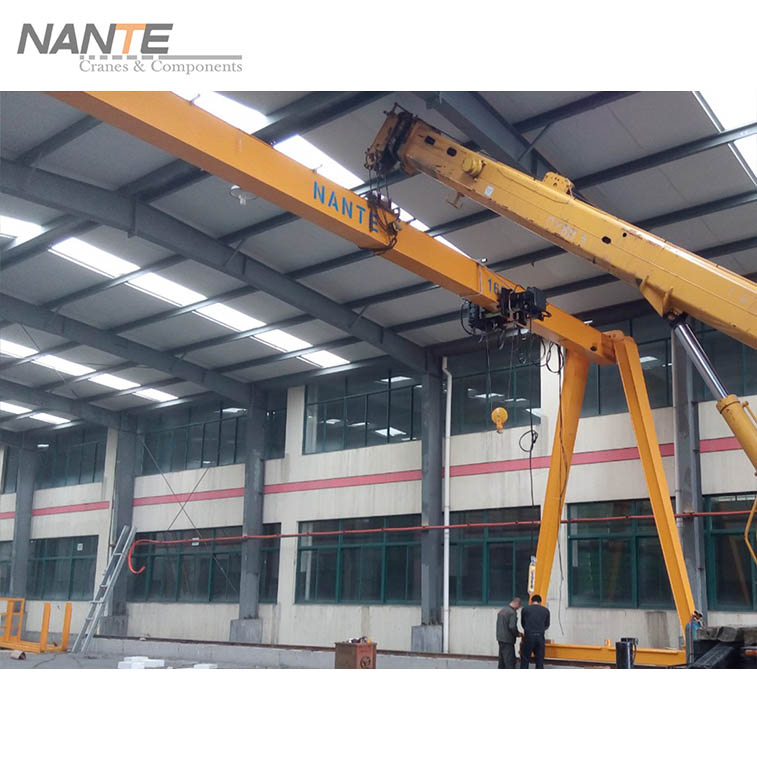How Many Types of Gantry Cranes Are There?
Date: 2024-03-22 Share:
Gantry cranes, a vital component of lifting equipment, hold prominent applicability in numerous sectors such as ports, docks, warehouses, construction zones and various other instances. Owing to its distinctive structural design coupled with efficient operational prowess, the gantry crane has emerged as an indispensable tool in contemporary industrial production and logistics transport. Nevertheless, it is crucial to note that the gantry crane is not merely a standalone product; rather it can be leveraged and fashioned into various types depending on specific application requirements, structure modus operandi and working settings amongst others. So arises the question: How many divergent forms of gantry cranes exist? The ensuing discussion aims to dissect different categories of gantry cranes along with their associated characteristics.

Classification by structural form
Single girder gantry crane
Single girder gantry crane is the most common type, which is mainly composed of a single beam and two columns. This type of crane has a simple structure and is easy to install, and is suitable for occasions with smaller spans and lighter lifting capacities. Due to its affordability and wide use, single girder gantry cranes have become the first choice for many small businesses and warehouses.
Double girder gantry crane
Double girder gantry cranes have greater load-carrying capacity and stability than single girder gantry cranes. It adopts a double girder structure, which makes the overall rigidity and strength of the crane significantly improved. Double girder gantry cranes are suitable for large warehouses, harbor terminals and other places that need to carry large-weight goods.
Classification according to the way of movement
Fixed gantry cranes
The fixed gantry crane is installed on a fixed foundation and cannot be moved at will. It is usually used for long-term fixed in a place for lifting operations, such as large warehouses, wharves and so on. The advantages of fixed gantry cranes are good stability and strong load-carrying capacity, but the disadvantage is that they are less flexible and not easy to move frequently.
Mobile gantry crane
Mobile gantry cranes can be moved between different workplaces, and they are usually installed on tires or rails for easy handling and transfer. Mobile gantry cranes are suitable for occasions that require frequent changes in the workplace, such as construction sites, temporary warehouses and so on. This kind of crane has the advantages of high flexibility and adaptability, but it also needs to pay attention to the safety of its moving process.
Classification by use
Universal gantry cranes
General-purpose gantry cranes are the most common type, which is suitable for lifting operations on a variety of occasions, such as loading and unloading of goods, lifting equipment and so on. General-purpose gantry cranes are characterized by simple structure, easy operation and strong adaptability, and are indispensable equipment in industrial production and logistics transportation.
Specialized gantry cranes
Specialized gantry cranes are designed according to specific working environments and needs. For example, the special gantry cranes for shipyards are optimized for the special requirements of ship construction and maintenance in terms of structure and performance; the special gantry cranes for wind farms can cope with harsh environments such as high altitudes and gusty winds, and complete the installation and maintenance work of wind turbines. Specialized gantry cranes play an irreplaceable role in specific areas.

Classification by control mode
Manual control gantry cranes
Manual control gantry cranes are mainly operated manually to realize lifting operations. It is usually equipped with a manual control device, the operator can manipulate the crane through the handle, buttons and other ways. Manual control gantry crane operation is simple and intuitive, suitable for some occasions that do not require high precision.
Automatic control gantry cranes
Automatic control gantry crane realizes automatic operation through advanced control systems and sensors. It can automatically adjust the operating parameters of the crane according to the preset program or real-time data to realize accurate and efficient lifting operations. Automatic control gantry cranes are suitable for occasions with high requirements for precision and efficiency, such as automated warehouses, intelligent logistics systems and so on.
Conclusion
In conclusion, there exists a broad spectrum of gantry cranes, each distinguishable and characterized by unique sets of features tailored to satisfy varying classification criteria. Applying these types appropriately within practical environments necessitates careful analysis and selection based on specific job requirements. Furthermore, in light of continuous advancements in technology, we are witnessing concurrent improvements in this machinery’s characteristics and performance capabilities. Projection into the future allows us to anticipate even more efficient gantry cranes propelled by significant technological intelligence.
We can see various types of gantry cranes in Nante Crane’s product line. Whether fixed or mobile, general or specialized, Nante Crane provides customers with high-quality crane products based on its excellent technical strength and rich production experience. These products not only have stable performance and reliable quality, but also have the flexibility to meet the individual needs of different customers. We believe that in the future, Nante Crane will continue to lead the development trend of the gantry crane industry, bringing more innovation and breakthroughs for industrial production and logistics transportation.
 English
English






